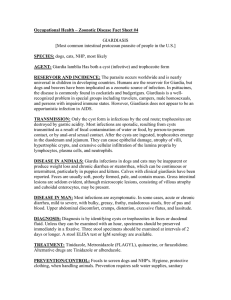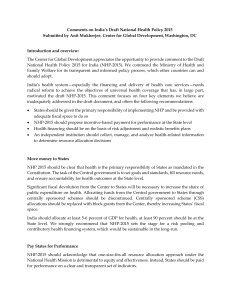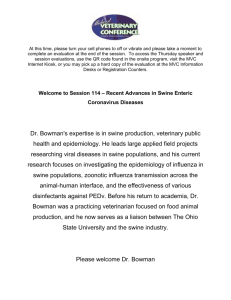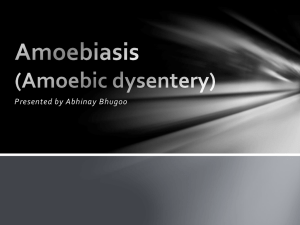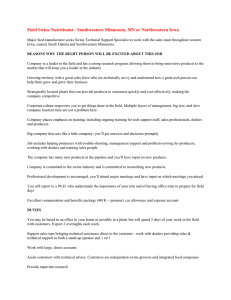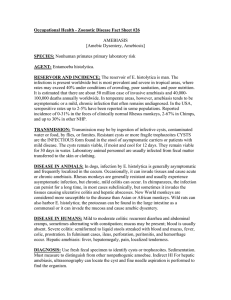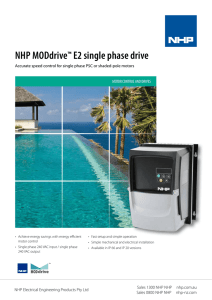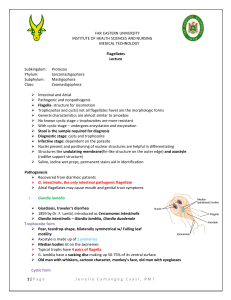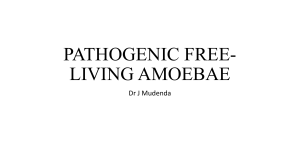Occupational Health - Zoonotic Disease Fact Sheets #25 SPECIES: AGENT: RESERVOIR AND INCIDENCE:
advertisement
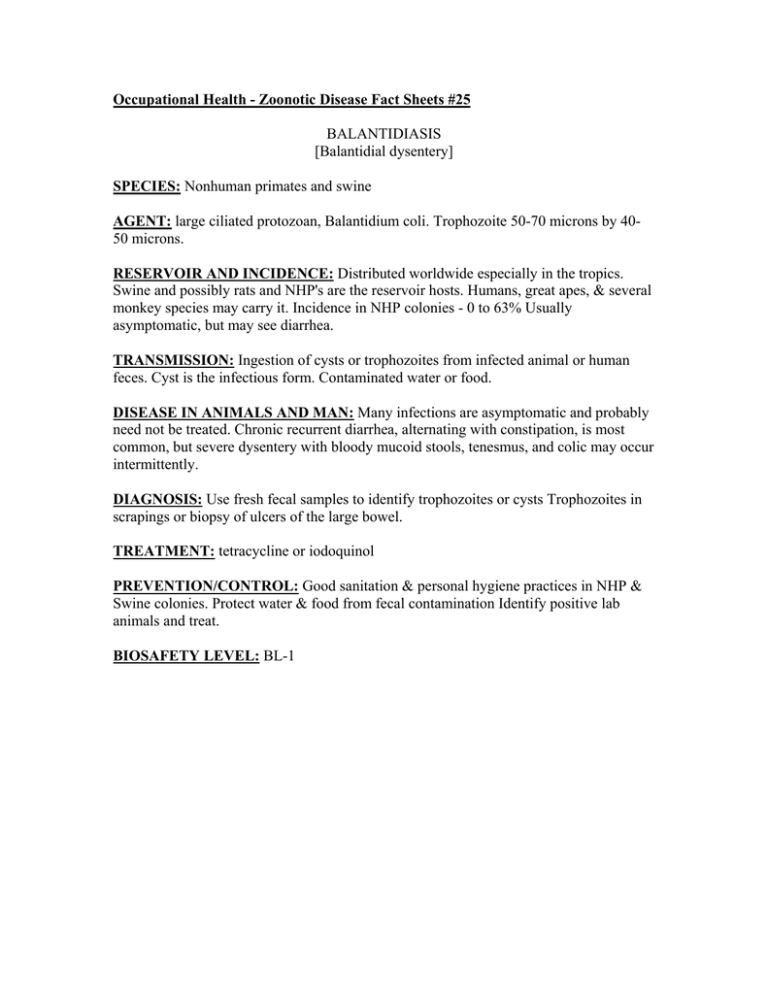
Occupational Health - Zoonotic Disease Fact Sheets #25 BALANTIDIASIS [Balantidial dysentery] SPECIES: Nonhuman primates and swine AGENT: large ciliated protozoan, Balantidium coli. Trophozoite 50-70 microns by 4050 microns. RESERVOIR AND INCIDENCE: Distributed worldwide especially in the tropics. Swine and possibly rats and NHP's are the reservoir hosts. Humans, great apes, & several monkey species may carry it. Incidence in NHP colonies - 0 to 63% Usually asymptomatic, but may see diarrhea. TRANSMISSION: Ingestion of cysts or trophozoites from infected animal or human feces. Cyst is the infectious form. Contaminated water or food. DISEASE IN ANIMALS AND MAN: Many infections are asymptomatic and probably need not be treated. Chronic recurrent diarrhea, alternating with constipation, is most common, but severe dysentery with bloody mucoid stools, tenesmus, and colic may occur intermittently. DIAGNOSIS: Use fresh fecal samples to identify trophozoites or cysts Trophozoites in scrapings or biopsy of ulcers of the large bowel. TREATMENT: tetracycline or iodoquinol PREVENTION/CONTROL: Good sanitation & personal hygiene practices in NHP & Swine colonies. Protect water & food from fecal contamination Identify positive lab animals and treat. BIOSAFETY LEVEL: BL-1
